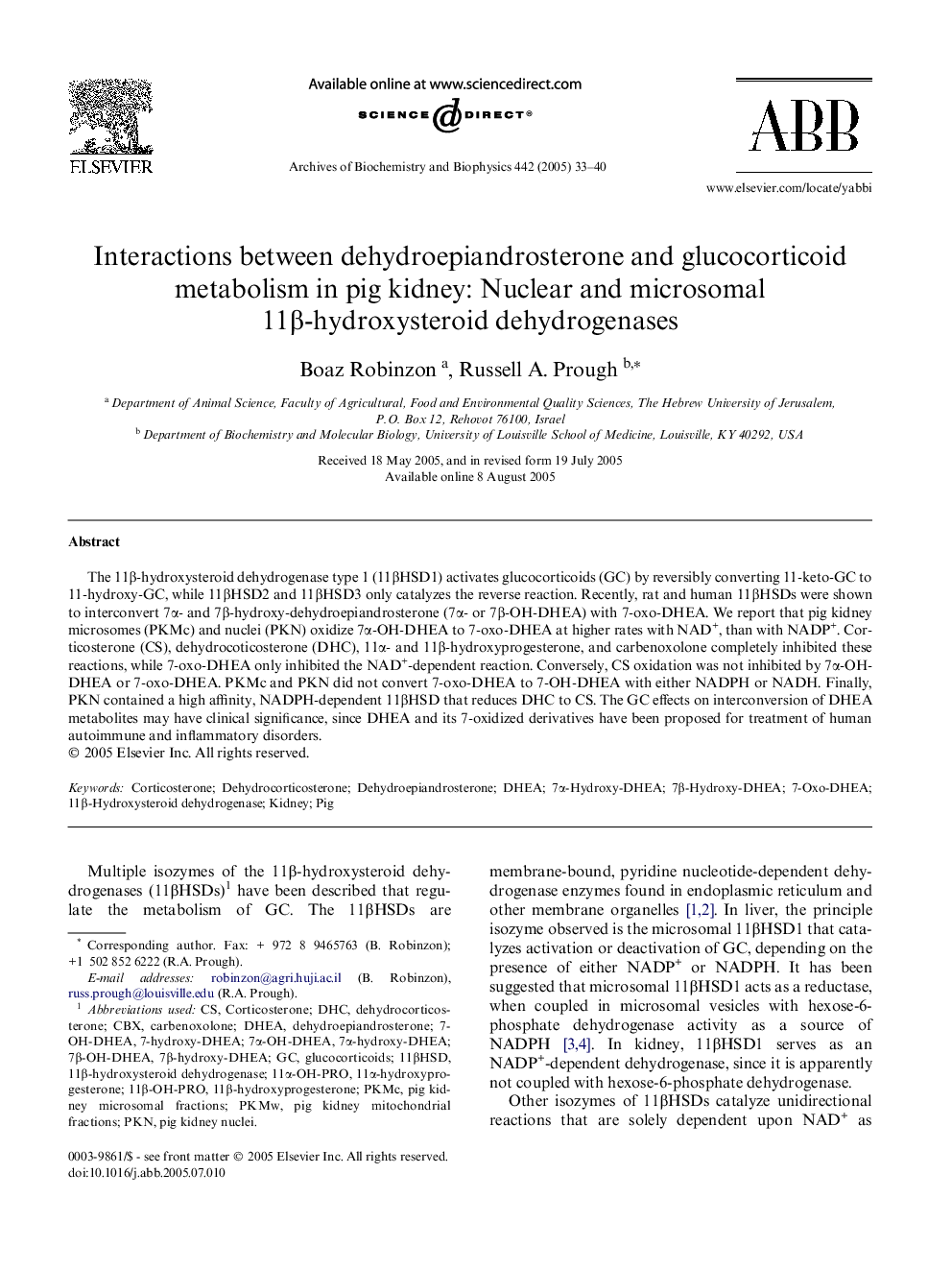| Article ID | Journal | Published Year | Pages | File Type |
|---|---|---|---|---|
| 9882107 | Archives of Biochemistry and Biophysics | 2005 | 8 Pages |
Abstract
The 11β-hydroxysteroid dehydrogenase type 1 (11βHSD1) activates glucocorticoids (GC) by reversibly converting 11-keto-GC to 11-hydroxy-GC, while 11βHSD2 and 11βHSD3 only catalyzes the reverse reaction. Recently, rat and human 11βHSDs were shown to interconvert 7α- and 7β-hydroxy-dehydroepiandrosterone (7α- or 7β-OH-DHEA) with 7-oxo-DHEA. We report that pig kidney microsomes (PKMc) and nuclei (PKN) oxidize 7α-OH-DHEA to 7-oxo-DHEA at higher rates with NAD+, than with NADP+. Corticosterone (CS), dehydrocoticosterone (DHC), 11α- and 11β-hydroxyprogesterone, and carbenoxolone completely inhibited these reactions, while 7-oxo-DHEA only inhibited the NAD+-dependent reaction. Conversely, CS oxidation was not inhibited by 7α-OH-DHEA or 7-oxo-DHEA. PKMc and PKN did not convert 7-oxo-DHEA to 7-OH-DHEA with either NADPH or NADH. Finally, PKN contained a high affinity, NADPH-dependent 11βHSD that reduces DHC to CS. The GC effects on interconversion of DHEA metabolites may have clinical significance, since DHEA and its 7-oxidized derivatives have been proposed for treatment of human autoimmune and inflammatory disorders.
Keywords
Related Topics
Life Sciences
Biochemistry, Genetics and Molecular Biology
Biochemistry
Authors
Boaz Robinzon, Russell A. Prough,
